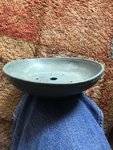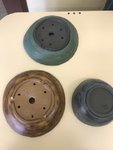sorce
Nonsense Rascal
Thanks for illuminating.
Just remember this is Illumination with a Sorce light, which, now that I think about it, is really just realizing the difference between "truth truths" and "true ifs".
Like the arguments we have here because everything is true and everyone is right, same arguments about pottery.
We argue because people speak in absolutes with their truths. When really those truths are only true if other things are in place. "True if ..."
I like to find the "truth truths". The things that override everything else. The real cause, the real prevention, the real nature, the real science, the thing that happens regardless of previous interaction. The one Real truth.
I think that's why people have such a problem with me, because this thing exists and I recognize it. Then they think I have these absolutes, when really I don't hold these things as absolutes, they are just the knowledge that guides other knowledge.
Like we know water makes a tree grow, but there is still no less than...
Wow, there's 86,400 seconds in a day, can you imagine how many different watering patterns one could come up with? Millions!
No one is going thru millions of patterns so we get "close enough" and pour at those times.
Some of these Truth truths are not as easy to see as "plants need water".
And some of the process does require a bit more delving into in order to squeeze out each last drop of what is possible.
People talk about how this is Horticulture and Art. I would argue it is one in the same since, if I am an artist, and my medium is horticulture, I will learn to push it to the very limit, that edge where successful art comes from, and this means manipulating horticulture as if I was the tree. It's only when these lines are blurred, the artistic lines follow.
Oh...pottery ...
Let that be illuminated, to watch out for the "true ifs".
One important truth truth is this.
Every individual clay. Every individual glaze, and therefore, every individual clay and glaze combination has its own "perfect" firing schedule.
So the more different things we throw in a kiln, the larger we are just striving for the closest average, so everything comes out ok, rather than one thing being fired perfectly.
This means automatically our pottery is at less than 100%.
Just like we can't work over some crazy schedule to water every three seconds at 50psi then 37psi for 5 seconds, then a minute of, then 4....blah blah...
We can't technically fire 2 different Clay's to perfection in the same kiln.
The question is, how far is our clay and glaze from perfection, if we are in a community kiln.
Exploiting the "true ifs".....
Oh damn, hey @Peter44, cone packs on every shelf! But even before that, you may be able to find out if your rounds got put on the hottest shelf. Maybe you can get on a cooler shelf! Ask the kilnmaster.
"It's warping"...
True If...it's on the hottest shelf. Move it.
True If...you don't add something. Mix it.
True if...you use that clay. Change it!
Also @Peter44 Standard actually just changed all their literature on the 266 and 710 which is their dark Manganese Colored body from Cone 5/6 to 4/5 with best results at 5.
It is HIGHLY possible than the source of Manganese has changed across the board and rather than change entire formulas, they have just lowered the recommended temperature. This could have went unnoticed by the folks running the studio.
Just remembering it is odd it said cone 5.
Especially since they are probly firing to 6 correct?
Sorce








